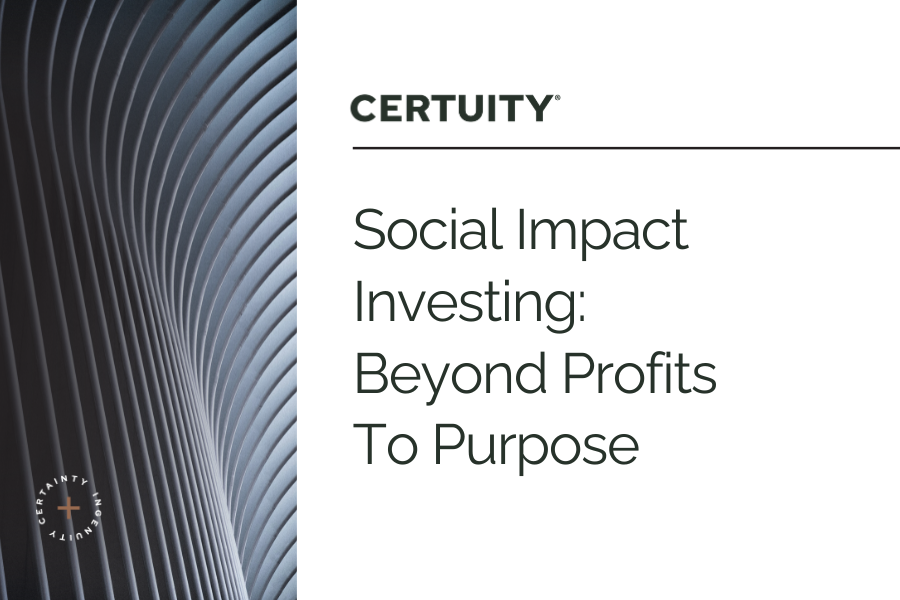
In today’s rapidly evolving financial landscape, success is no longer measured by profits alone. As global attention shifts toward sustainability and social responsibility, social impact investing is emerging as a transformative force—one that redefines the role of capital in society. This approach encourages investors to look beyond traditional returns, prioritizing measurable positive change in communities and the environment alongside financial gains.
What Is Social Impact Investing?
Social impact investing is an investment strategy that seeks to generate both financial returns and a positive social or environmental impact. Unlike traditional investing, which focuses solely on profit, social impact investing aims to address pressing global challenges—such as poverty, inequality, climate change, and access to healthcare or education—by directing capital toward solutions that benefit society.
Impact investing is not philanthropy; it expects a financial return, but equally values the social good created. This dual objective sets it apart from other responsible investing strategies like ESG (Environmental, Social, Governance) or SRI (Socially Responsible Investing), as it explicitly targets measurable outcomes that improve lives or protect the planet.
Why Social Impact Investing Matters
- Tackling Global Challenges: Social impact investing mobilizes private capital to address issues that philanthropy and government spending alone cannot solve, such as renewable energy, affordable housing, and healthcare innovations.
- Aligning Values and Returns: Investors can achieve their financial goals while supporting causes that reflect their personal or organizational values, creating a sense of purpose and fulfillment.
- Driving Long-Term Value: Companies that integrate social impact into their core strategies often experience stronger stakeholder loyalty, better risk management, and sustainable growth.
- Catalyzing Broader Change: Impact investments can seed new markets, inspire other investors, and influence corporate practices toward greater social responsibility.
How Social Impact Investing Works
Impact Metrics:
Unlike traditional financial metrics, impact metrics assess how investments contribute to broader goals—such as improving healthcare, advancing education, or reducing carbon emissions. These metrics enable investors to evaluate and report on the tangible difference their capital is making in the world.
Types of Social Impact Investments:
- Renewable Energy: Funding solar, wind, or clean technology projects to combat climate change and create jobs.
- Microfinance: Providing small loans to entrepreneurs in underserved communities, fostering economic development and financial inclusion.
- Affordable Housing: Investing in projects that increase access to safe, stable homes for low-income families.
- Sustainable Agriculture: Supporting environmentally friendly farming practices that promote food security and healthier communities.
- Healthcare and Education: Financing startups and initiatives that expand access to essential services, particularly in disadvantaged regions.
Examples in Action:
- Tugende in Uganda helps motorcycle taxi drivers own their vehicles, lifting thousands out of poverty and building local assets.
- Vishuddh Recycle in India partners with waste pickers to create a circular economy for plastics, blending social empowerment with environmental sustainability.
Kinara Capital in India provides collateral-free business loans to small entrepreneurs, supporting job creation and financial inclusion.
The Benefits of Social Impact Investing
- Contributing to Positive Change: Investors can see tangible outcomes from their investments, such as improved livelihoods, cleaner environments, or stronger communities.
- Reducing Financial Risk: Companies that address social and environmental risks may be better positioned for long-term success, offering resilience in changing markets.
- Building Social Capital: Beyond financial returns, impact investing builds trust, loyalty, and goodwill among stakeholders, enhancing an organization’s reputation and influence.
Moving from Profits to Purpose
The future of investing lies in integrating purpose with profit. As more investors, especially younger generations, demand that their money drives positive change, social impact investing is poised to become the new standard. Companies and investors alike are challenged to adopt impact metrics from the outset, embedding social responsibility into their DNA and focusing on long-term value creation.
“The future of business is intertwined with the ability to create lasting, positive change. Companies that focus on social impact alongside financial growth are not only contributing to a better world—they’re also paving the way for sustainable long-term success.”
What’s Next for Social Impact Investing?
Social impact investing is positioned to help humanity expand beyond a narrow focus on profits toward a more holistic vision of success. By leveraging capital to address society’s most urgent challenges, interested investors can create a legacy that transcends the balance sheet—one of meaningful, measurable impact. Now just might be the time to look further into purpose and legacy by supporting companies that drive social good, and help shape a future where financial success and positive change go hand in hand.